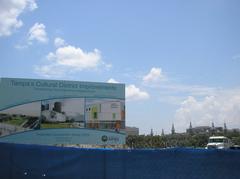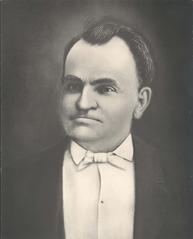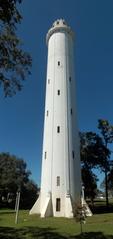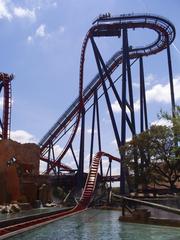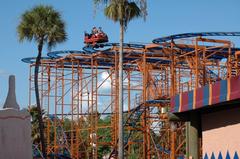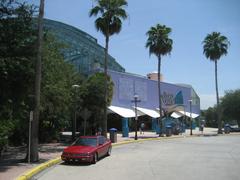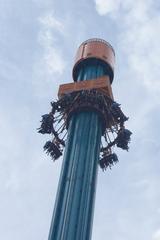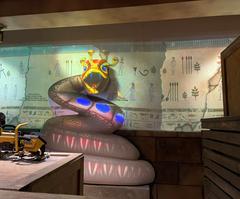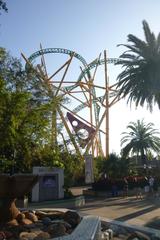Comprehensive Guide to Visiting Tampa, Hillsborough County, United States of America
Date: 30/07/2024
Captivating Introduction
Welcome to Tampa, a city where the past and present dance together in a vibrant tapestry of culture, history, and adventure. Imagine strolling through cobblestone streets where the aroma of freshly brewed Cuban coffee mingles with the salty sea breeze. Picture yourself exploring a city that once echoed with the footsteps of Spanish explorers and the clinks of cigar makers’ tools. Tampa, located in Hillsborough County, is a dynamic metropolis that has evolved from a sleepy coastal town into a bustling hub of activity, offering something for everyone. From the thrill-seekers who flock to Busch Gardens Tampa Bay to the history buffs who delve into the rich past of Ybor City, Tampa is a city that promises endless adventures and unforgettable experiences.
The story of Tampa begins in the early 16th century with the arrival of Spanish explorers like Ponce de Leon, who first set foot in the Tampa Bay area in 1513 (Tampa History). Fast forward a few centuries, and the establishment of Fort Brooke in 1824 marked the city’s transformation into a military and economic hub (History of Tampa, Florida). The late 19th century brought an economic boom with the arrival of Henry B. Plant’s railroad and the discovery of phosphate, which turned Tampa into a mining and shipping powerhouse. The city’s cultural landscape was further enriched by the influx of Cuban, Spanish, and Italian immigrants, who settled in Ybor City and transformed it into a vibrant Latin Quarter (Hillsborough County History).
But Tampa is not just a city of the past. Today, it boasts world-class attractions like The Florida Aquarium, the Tampa Riverwalk, and the Tampa Museum of Art. The city’s culinary scene is a feast for the senses, with iconic dishes like the Cuban sandwich and devil crabs awaiting your taste buds. And let’s not forget the vibrant festivals and events that light up the city year-round, from the Gasparilla Pirate Festival in January to the Tampa Bay Blues Festival in the spring.
So, whether you’re here to dive into history, seek out thrills, or simply soak up the local culture, Tampa has something to offer. Ready to discover the magic of this incredible city? Let’s dive in!
Table of Contents
- ## Historical Overview of Tampa, Hillsborough County
- ### Early Exploration and Settlement
- ### Establishment of Fort Brooke
- ### Hillsborough County Formation
- ### Civil War and Reconstruction
- ### Economic Boom and Immigration
- ### Early 20th Century Developments
- ### Military Significance
- ### Modern Tampa
- ### Seasonal Highlights
- ### Local Lingo Lessons
- ### Myth Busting and Surprises
- ### Visitor Tips
- ### FAQ
- ## Discover the Magic of Tampa, Hillsborough County, United States of America
- ## Cultural Insights
- ### Introduction
- ### Historical Significance
- ### Ybor City: A Cultural Melting Pot
- ### Festivals and Events
- ### Museums and Cultural Centers
- ### Performing Arts
- ### Culinary Scene
- ### Literary and Artistic Contributions
- ### Preservation of Heritage
- ### Community and Cultural Celebrations
- ### Conclusion
Historical Overview of Tampa, Hillsborough County
Early Exploration and Settlement
Ever wondered how a sleepy coastal town transformed into a vibrant cultural melting pot? Welcome to Tampa, where even the air hums with the tales of buccaneers and cigar makers. Picture this: it’s the early 16th century, and Spanish explorers are setting their sights on a lush, untamed land. Among them, the legendary Ponce de Leon lands in the Tampa Bay area in 1513. While the Spanish laid their roots more firmly in eastern Florida, Tampa’s story was just beginning (Tampa History). Between 1559 and 1819, this region saw the flags of Spain, France, Great Britain, and the United States flutter in the breeze. In 1821, the U.S. snagged Florida from Spain for $5 million (Hillsborough County History).
Establishment of Fort Brooke
Fast forward to 1824. The U.S. Army established Fort Brooke at the mouth of the Hillsborough River, essentially the seed from which modern Tampa would sprout (History of Tampa, Florida). The town of Tampa was first incorporated in 1855, though its early days were plagued by transportation woes, conflicts with the Seminole tribe, and pesky yellow fever outbreaks.
Hillsborough County Formation
On January 25, 1834, Hillsborough County was officially born, carved out from Alachua and Monroe Counties during the U.S. territorial period (1822–1845). It got its name from Wills Hill, the Earl of Hillsborough, who was the British Secretary of State for the Colonies from 1768 to 1772 (Hillsborough County, Florida). Initially, the county was a giant, covering areas that are now eight other counties. The last significant territorial change occurred in 1911 with the creation of Pinellas County.
Civil War and Reconstruction
Tampa had its share of soap opera-worthy drama during the Civil War, becoming a hive of military activity with Fort Brooke serving as a refuge and a base. Post-war, Tampa hit a rough patch during Reconstruction, leading the city government to disincorporate for over a decade (History of Tampa, Florida).
Economic Boom and Immigration
Here’s where things get exciting: the late 19th century was Tampa’s time to shine. Henry B. Plant extended his railroad to the Hillsborough River in the 1880s, opening up the area to economic growth (Tampa History). Phosphate discoveries in the late 1880s turned Tampa into a mining and shipping powerhouse. In 1885, Vicente Martinez-Ybor set up a cigar factory, giving birth to Ybor City. This led to a flood of Cuban, Spanish, Italian, and other immigrants, transforming Tampa into one of Florida’s largest cities by 1900 (History of Tampa, Florida). The population skyrocketed from under 800 in 1880 to over 15,000 by 1900.
Early 20th Century Developments
The early 20th century? Tampa was buzzing. It grew as a financial, trade, and commercial hub. The first Gasparilla Pirate Festival happened, and Tony Jannus piloted the world’s first commercial passenger airline in 1914 (Tampa History). The 1920s brought the automobile boom, and with it, new subdivisions like Davis Island.
Military Significance
Tampa has always been a military hotspot, serving as a key port for U.S. troops bound for Cuba during the Spanish-American War. Today, it houses the U.S. Central Command and U.S. Special Operations Command at MacDill Air Force Base (Tampa History).
Modern Tampa
From historic roots to a vibrant present, Tampa is a city that celebrates its diverse cultural heritage and economic significance. The Tampa Bay area boasts attractions like Busch Gardens, The Florida Aquarium, and ZooTampa. The Tampa Riverwalk offers scenic views and easy access to cultural institutions like the Tampa Museum of Art and the Tampa Bay History Center (Visit Tampa Bay).
Seasonal Highlights
Tampa is a city that shines year-round, but certain seasons bring unique attractions and events. In the winter, the Gasparilla Pirate Festival in January turns the city into a swashbuckling celebration. Spring offers pleasant weather perfect for outdoor activities and festivals like the Tampa Bay Blues Festival. Summer is hot and humid, making it ideal for water activities and visiting indoor attractions like museums and aquariums. Fall brings milder temperatures and events like the Hillsborough County Fair and various Halloween-themed activities.
Local Lingo Lessons
To truly fit in, you might want to pick up some local lingo. For instance, locals refer to Tampa as the “Cigar City,” a nod to its historic cigar industry. You might hear someone say they’re heading to “SoHo,” which means the South Howard Avenue district, known for its nightlife and dining. And if someone mentions a “Cuban,” they’re likely talking about the famous Cuban sandwich, a Tampa staple. Don’t forget to try a “devil crab” if you get the chance—it’s a local delicacy!
Discover the Magic of Tampa, Hillsborough County, United States of America
Introduction
Welcome to Tampa, where the sun shines brighter, and the adventures are endless! Picture this: a city where roller coasters roar, dolphins dance, and history whispers through cobblestone streets. Whether you’re a thrill-seeker, a history buff, or just someone looking for a good time, Tampa has something to tickle your fancy. So, grab your sunglasses and let’s dive into the top attractions that make this city a must-visit destination.
Busch Gardens Tampa Bay
Feeling brave? Busch Gardens Tampa Bay is calling your name! This adrenaline junkie’s paradise is not just a theme park; it’s a wild ride through thrills and chills. Imagine plummeting 200 feet on the SheiKra or going on a safari to greet giraffes and zebras on the Serengeti Plain. And don’t miss the spooky Howl-O-Scream or the festive Christmas Town! (Busch Gardens)
The Florida Aquarium
Dive into the wonders of The Florida Aquarium, where over 20,000 aquatic plants and animals await your discovery. Walk through a mangrove forest on the Wetlands Trail or marvel at the colorful marine life in the Coral Reef exhibit. Feeling adventurous? Take a Swim with the Fishes program or hop on a Wild Dolphin Cruise. This aquarium is a splash of fun! (The Florida Aquarium)
Tampa Riverwalk
Stroll along the Tampa Riverwalk, a scenic 2.6-mile trail that hugs the Hillsborough River. This pedestrian paradise connects you to parks, museums, and eateries. Whether you’re admiring art at the Tampa Museum of Art or enjoying a picnic at Curtis Hixon Waterfront Park, the Riverwalk is your gateway to Tampa’s vibrant heart. Don’t forget to check out Riverfest and the Tampa Bay Margarita Festival! (Tampa Riverwalk)
Ybor City
Step back in time in Ybor City, Tampa’s historic Latin Quarter. Founded by cigar manufacturers in the 1880s, this neighborhood is a cultural melting pot with Spanish, Cuban, and Italian influences. Explore the Ybor City Museum State Park or join a walking tour to admire the architecture. As the sun sets, Ybor City transforms into a nightlife hotspot with bars, clubs, and eateries serving up live music and Cuban delicacies. (Ybor City)
Tampa Museum of Art
Art lovers, rejoice! The Tampa Museum of Art offers a feast for the eyes with its blend of contemporary and classical pieces. From Greek and Roman antiquities to modern masterpieces by Roy Lichtenstein, this museum is a treasure trove of creativity. Don’t miss the temporary exhibitions and workshops that keep the art scene buzzing. (Tampa Museum of Art)
Henry B. Plant Museum
Travel to the opulent past at the Henry B. Plant Museum, housed in the historic Tampa Bay Hotel. Built by railroad tycoon Henry B. Plant in 1891, this museum showcases the lavish lifestyle of the Gilded Age. Wander through rooms adorned with original furnishings and artifacts, and imagine the grandeur of a bygone era. (Henry B. Plant Museum)
Tampa Bay History Center
Journey through time at the Tampa Bay History Center, where interactive exhibits bring the past to life. From indigenous cultures to Spanish explorers and the cigar industry’s rise, this museum covers it all. With a research library, museum store, and the Columbia Cafe serving Cuban-inspired dishes, it’s a history buff’s dream. (Tampa Bay History Center)
Adventure Island
For a splash of excitement, head to Adventure Island, a 30-acre water park across from Busch Gardens. Whether you’re zipping down the Colossal Curl or braving the 70-foot drop of Vanish Point, adventure awaits around every corner. Rent a cabana, grab a bite, and enjoy live entertainment for a day of wet and wild fun. (Adventure Island)
Hillsborough River State Park
Escape the urban hustle at Hillsborough River State Park. Just 30 minutes from downtown Tampa, this natural haven offers over 7 miles of hiking trails, a scenic river for canoeing and kayaking, and a large swimming pool. Spot alligators, turtles, and birds as you unwind in nature. Stay overnight in the park’s camping facilities for a full immersion in tranquility. (Hillsborough River State Park)
Amalie Arena
Catch the excitement at Amalie Arena, Tampa’s top spot for sports and entertainment. Home to the NHL’s Tampa Bay Lightning, this arena also hosts concerts, family shows, and more. With state-of-the-art amenities and a seating capacity of over 20,000, every event here is an unforgettable experience. (Amalie Arena)
Conclusion
Tampa, Hillsborough County, is a city that promises adventure at every turn. From thrilling theme parks and interactive museums to historic neighborhoods and peaceful parks, there’s something for everyone. Whether you’re a first-time visitor or a seasoned traveler, Tampa’s unique blend of culture, history, and fun will leave you with unforgettable memories. Ready for your next adventure? Download the Audiala app to unlock even more hidden gems and insider tips for your Tampa journey!
Cultural Insights
Introduction
Imagine a place where pirates once roamed, cigars rolled in the hands of immigrants, and the aroma of Cuban coffee wafts through the air. Welcome to Tampa! This city is like that eclectic aunt who throws the best parties—always full of stories, flavors, and a bit of unexpected fun. Tampa, located in Hillsborough County, Florida, boasts a rich cultural tapestry woven from its diverse history.
Historical Significance
Tampa, established in 1887, has grown from a small settlement into a bustling metropolis. The city’s history is celebrated annually, with events such as the 137th birthday celebration held on July 15, 2024, where city leaders and historians, including City Council Member Charlie Miranda and Fred Hearns, curator of Black History for the Tampa Bay History Center, share insights into Tampa’s past (Tampa.gov).
Ybor City: A Cultural Melting Pot
One of Tampa’s most culturally significant neighborhoods is Ybor City, founded in the 1880s by cigar manufacturers. This area became a melting pot of immigrants, primarily from Cuba, Spain, and Italy, who brought their customs, cuisine, and traditions. Today, Ybor City is a National Historic Landmark District, known for its vibrant nightlife, historic buildings, and the last operating cigar factory, J.C. Newman Cigar Co. Visitors can explore the rich history of this area through walking tours and special presentations (WUSF). Pro tip: Find the oldest standing building in Ybor City or taste-test different craft beers at local breweries.
Festivals and Events
Tampa hosts numerous festivals that celebrate its diverse cultural heritage. The Tampa Bay Black Heritage Festival is a ten-day event featuring live entertainment, cultural events, and educational activities (Hillsborough Arts). Additionally, the Gasparilla Pirate Festival, held annually, is a unique Tampa tradition that includes a parade, music, and various festivities, drawing inspiration from the legendary pirate José Gaspar. Think of it as Tampa’s way of saying, ‘Aye, matey!’ to its pirate past.
Museums and Cultural Centers
Tampa is home to several museums and cultural centers that offer deep dives into the city’s history and cultural evolution. The Tampa Bay History Center provides exhibits on the region’s past, from indigenous cultures to modern times. The center also hosts events like the “Cuban Pathways” tour, which explores 500 years of Cuban history and its connections to Tampa (WUSF).
The Florida Aquarium and the Tampa Museum of Art are other notable institutions. The aquarium offers interactive exhibits and educational programs about marine life, while the art museum features a diverse collection of contemporary and classical art (Barefoot Caribou).
Performing Arts
Tampa’s performing arts scene is vibrant and diverse, with venues like the Straz Center for the Performing Arts hosting Broadway shows, concerts, and other performances. The Tampa Theatre, a historic movie palace, offers a unique cinematic experience with its ornate architecture and classic films (Hillsborough Arts).
Culinary Scene
Tampa’s culinary scene reflects its multicultural heritage. Cuban cuisine is particularly prominent, with the Cuban sandwich being a local favorite. Ybor City is home to several historic restaurants, such as the Columbia Restaurant, which has been serving Spanish and Cuban dishes since 1905. The city also boasts a burgeoning craft beer scene, with numerous breweries offering a variety of local brews (Barefoot Caribou). Head to a local market and try ordering your café con leche like a local – ‘Un café con leche, por favor!’
Literary and Artistic Contributions
Tampa supportsa thriving literary and artistic community. Organizations like Heard ‘Em Say Teen Poetry provide platforms for young poets to express themselves and promote cultural understanding through spoken word (Hillsborough Arts). The city also hosts various art galleries and public art installations, contributing to its vibrant cultural landscape.
Preservation of Heritage
Efforts to preserve Tampa’s cultural heritage are evident in initiatives like Tampa Preservation, which focuses on maintaining historic structures and educating the public about the city’s unique history (Hillsborough Arts). The Burgert Brothers Collection, housed at the Tampa-Hillsborough County Public Library, offers a photographic history of the area, providing valuable insights into Tampa’s past (WUSF).
Community and Cultural Celebrations
Tampa’s community spirit is showcased through various cultural celebrations and events. The Riverwalk July 4th Boat Parade, the Florida Strawberry Festival, and the Hyde Park Art Festival are just a few examples of events that bring the community together to celebrate Tampa’s rich cultural heritage (Hillsborough Arts).
Conclusion
Tampa’s cultural landscape is a testament to its diverse history and vibrant community. From historic neighborhoods and museums to festivals and culinary delights, the city offers a rich tapestry of experiences that reflect its unique heritage. Whether exploring the historic streets of Ybor City, enjoying a performance at the Straz Center, or savoring a Cuban sandwich, visitors to Tampa are sure to find a wealth of cultural treasures to discover. Ready to uncover Tampa’s secrets? Download Audiala, your ultimate travel companion, and let the city’s stories come alive in your ears!
Call to Action
As your journey through Tampa comes to a close, it’s clear that this city is a treasure trove of experiences waiting to be uncovered. From the historic streets of Ybor City to the modern marvels along the Tampa Riverwalk, every corner of Tampa tells a story of resilience, innovation, and cultural diversity. The city’s rich history is celebrated through its museums, historic landmarks, and annual festivals that bring the community together in joyous celebration.
Whether you’ve felt the adrenaline rush at Busch Gardens, marveled at marine life at The Florida Aquarium, or taken a leisurely stroll through the scenic Hillsborough River State Park, Tampa offers a unique blend of adventure and relaxation. The culinary delights, with their rich multicultural influences, provide a feast for both the eyes and the palate, while the vibrant arts scene showcases the city’s creative spirit.
Tampa is more than just a travel destination; it’s a city that invites you to become part of its story. By exploring its hidden gems, engaging with its local customs, and immersing yourself in its cultural richness, you’ll leave with memories that will last a lifetime. And remember, the best way to unlock all of Tampa’s secrets is with the Audiala app, your ultimate travel companion. Download Audiala to discover expert insights, hidden gems, and beautifully crafted audio guides that will enhance your Tampa adventure. Ready to uncover more of Tampa’s magic? The journey is just beginning!
References
- Tampa History. (n.d.). Retrieved from Tampa History
- History of Tampa, Florida. (n.d.). Wikipedia. Retrieved from History of Tampa, Florida
- Hillsborough County History. (n.d.). Retrieved from Hillsborough County History
- Visit Tampa Bay. (n.d.). Retrieved from Visit Tampa Bay
- Travel Lemming. (n.d.). Retrieved from Travel Lemming
- Barefoot Caribou. (n.d.). Retrieved from Barefoot Caribou
- WUSF. (2022, July 8). How to Learn More About Tampa History on Its 135th Anniversary. Retrieved from WUSF
- Hillsborough Arts. (2024, April). 2024 Arts and Culture Guide Digital. Retrieved from Hillsborough Arts


